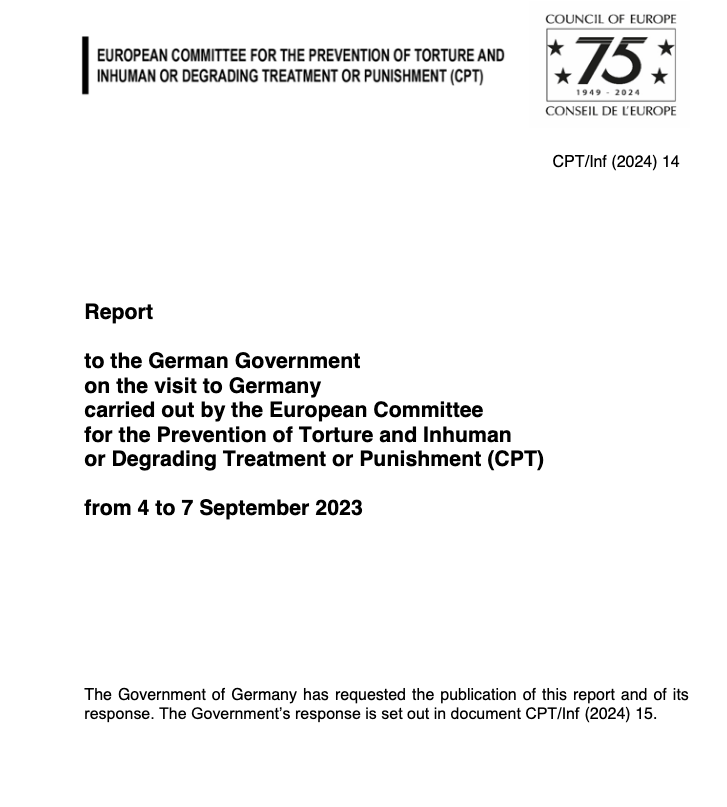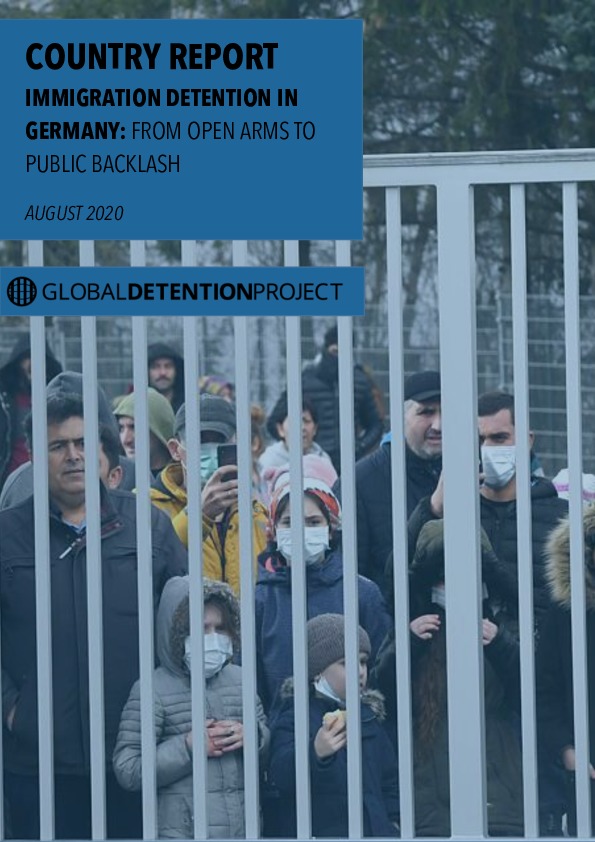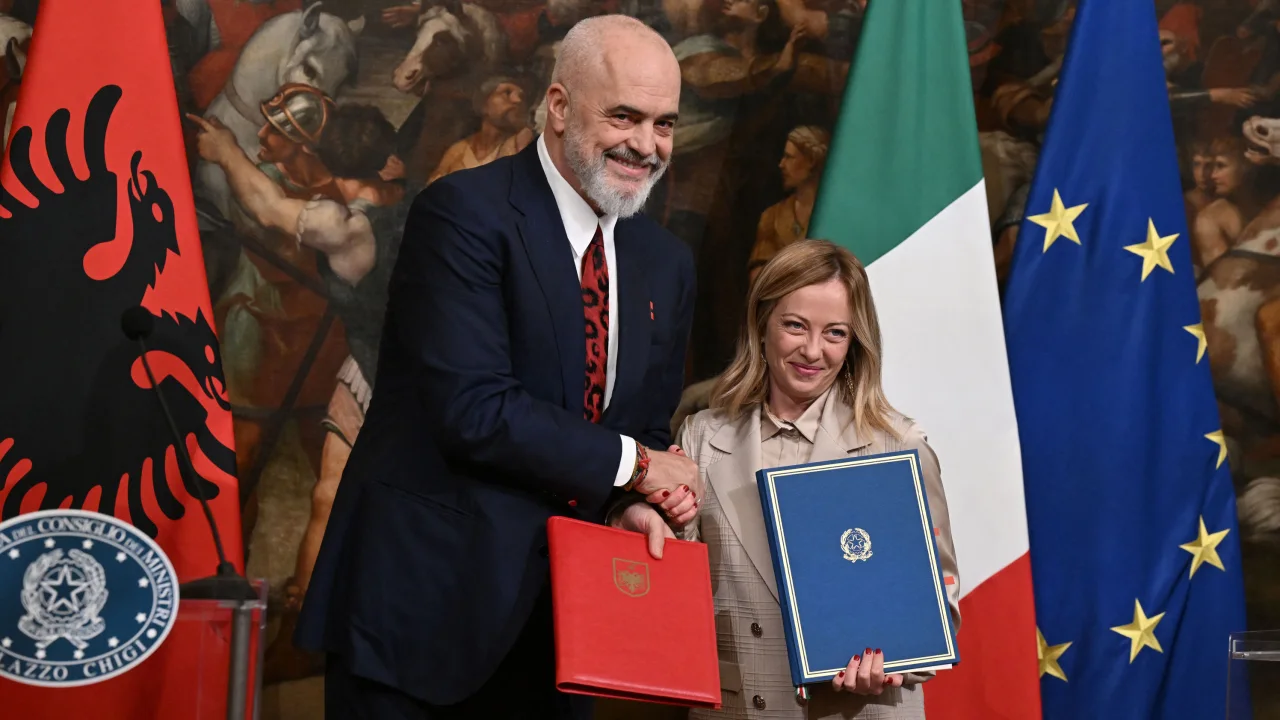So far this year, 233,500 refugees and migrants have arrived in Europe’s Mediterranean region, compared to 159,410 during the whole of 2022. Several EU states–including the EU’s three largest economies, Germany, France, and Italy–have focused on intensifying detention measures as a tool for responding to these growing challenges, raising concerns about the region’s faltering commitment […]
The removal operation: preparations and conduct In Germany (from report of the European Committee for the Prevention of Torture 2023 visit to Germany)
A. The removal operation: preparations and conduct; (Read full CPT report) 8. A main destination for refugees, asylum seekers and migrants, Germany has over the past decade received the highest number of asylum seekers in the European Union (EU).8 Since 2015, the country has pursued several initiatives and restrictive measures to reduce the number of […]

Germany: Covid-19 and Detention
Throughout 2020, Germany conducted numerous removal flights despite concerns regarding the dangers they present for deportees and their home communities as a result of the pandemic. (For more information on deportations from Germany, see 17 July update on this platform). Most recently–and amidst spiralling infection rates in the country–Germany deported 26 rejected Afghan asylum seekers […]

Germany: Covid-19 and Detention
Responding to the Global Detention Project’s Covid-19 survey, the German National Agency for the Prevention of Torture, which acts as National Preventive Mechanism (NPM), reported that the country had not implemented a moratorium on immigration detention orders after the onset of the pandemic; however, some detainees had been released as a consequence of the crisis, […]

Germany: Covid-19 and Detention
Observers have repeatedly raised concerns during the pandemic regarding conditions inside reception facilities in Germany, with several centres witnessing Covid-19 outbreaks and others subjecting refugees and asylum seekers to dangerous living conditions (see 10 June update). Recently, volunteers, social workers, and NGOs have warned of the dire living conditions experienced by non-nationals in Munich’s network […]

Germany: Covid-19 and Detention
There are an estimated 200,000 – 600,000 undocumented migrants in Germany. Authorities have stated that everyone, regardless of their status, may access Covid-19 testing and treatment. Although this is technically true, migrant rights advocates have highlighted concerns amongst undocumented migrants that should they seek testing and treatment, they will face sanctions. Hospitals and GPs in […]

Germany: Covid-19 and Detention
In response to the Global Detention Project’s Covid-19 survey, which has been sent to all national contact points of the European Migration Network, Germany’s Federal Office for Migration and Refugees (BAMF) repeated its standard response to questions concerning immigration detention in the country: that all such queries must be forwarded to state (Land) authorities. They […]

Germany: Covid-19 and Detention
Protests were reported in the Halberstadt reception centre, where more than 800 people have been under lockdown since 27 March 2020 due to positive Covid-19 tests in the facility. The lack of sanitary products and effective hygiene measures highly increases the risk of infection. Reports indicate that up to 50 people share a single toilet […]

Germany: Covid-19 and Detention
On 16 March, Germany reintroduced border controls, stationing federal police at the borders with Austria, Switzerland, France, Luxembourg and Denmark. The Ministry of Interior said that in coordination with the neighboring countries and authorities in all German federal states with external borders, the border police are ordered to turn away all travelers without a valid […]

Last updated: August 2020
DETENTION STATISTICS
DETAINEE DATA
DETENTION CAPACITY
ALTERNATIVES TO DETENTION
ADDITIONAL ENFORCEMENT DATA
PRISON DATA
POPULATION DATA
SOCIO-ECONOMIC DATA & POLLS
LEGAL & REGULATORY FRAMEWORK
Does the Country Have Specific Laws that Provide for Migration-Related Detention?
Detention-Related Legislation
Additional Legislation
Bilateral/Multilateral Readmission Agreements
GROUNDS FOR DETENTION
Immigration-Status-Related Grounds
Non-Immigration-Status-Related Grounds in Immigration Legislation
Criminal Penalties for Immigration-Related Violations
Grounds for Criminal Immigration-Related Incarceration / Maximum Length of Incarceration
Children & Other Vulnerable Groups
LENGTH OF DETENTION
DETENTION INSTITUTIONS
Custodial Authorities
Detention Facility Management
PROCEDURAL STANDARDS & SAFEGUARDS
Types of Non-Custodial Measures (ATDs) Provided in Law
COSTS & OUTSOURCING
COVID-19 DATA
TRANSPARENCY
MONITORING
Types of Authorised Detention Monitoring Institutions
NATIONAL HUMAN RIGHTS MONITORING BODIES
NATIONAL PREVENTIVE MECHANISMS (OPTIONAL PROTOCOL TO UN CONVENTION AGAINST TORTURE)
NON-GOVERNMENTAL ORGANISATIONS (NGOS)
GOVERNMENTAL MONITORING BODIES
INTERNATIONAL TREATIES & TREATY BODIES
International Treaties Ratified
Ratio of relevant international treaties ratified
Individual Complaints Procedures
Relevant Recommendations or Observations Issued by Treaty Bodies
§ 69: The Committee recommends that the State party: (d) Ensure that detention of asylum-seeking and migrant children is always used as a measure of last resort and for the shortest appropriate time, in compliance with article 37 (b) of the Convention, and that detention is made subject to time limits and judicial review.
2014§ 24: The Committee urges the State party to: (a) Limit the number of detained asylum-seekers, including those who are the subject in “Dublin cases”, and the duration of their detention pending return, while observing the European Union Directive 2008/115/EC; (b) Ensure mandatory medical checks and systematic examination of mental illnesses or traumatization of all asylum-seekers including the “Dublin cases” by independent and qualified health professionals upon arrival in all Länder detention facilities; (c) Provide a medical and psychological examination and report by a specially trained independent health expert when the signs of torture or traumatization have been detected during the personal interviews by asylum authorities; and (d) Provide adequate accommodation for detained asylum-seekers separate from remand prisoners in all detention facilities, particularly for women awaiting deportation.
2011> UN Special Procedures
Visits by Special Procedures of the UN Human Rights Council
Relevant Recommendations or Observations by UN Special Procedures
§ 84: To safeguard the rights of asylum seekers and refugees, the Government should prohibit pre-deportation custody orders against persons belonging to particularly vulnerable groups, such as unaccompanied minors. The Working Group recommends that the Government reduce the length of the detention to the period of time strictly necessary for identification.
§ 85: There is a need for special attention to be given to vulnerable asylum seekers during the initial medical check.
§ 87: The Working Group recommends that the Government not limit court review of deportation orders, and build on the achievements in reducing the number of foreign nationals awaiting deportation in detention.
§ 88: The duration of detention pending deportation should be subjected to the strict application of the principle of proportionality and limited to the shortest possible period. The Working Group recommends that the duration of pre-deportation custody be significantly decreased. 2015> UN Universal Periodic Review
Relevant Recommendations or Observations from the UN Universal Periodic Review
> Global Compact for Migration (GCM)
REGIONAL HUMAN RIGHTS MECHANISMS
Regional Legal Instruments
Relevant Recommendations or Observations of Regional Human Rights Mechanisms
HEALTH CARE PROVISION
HEALTH IMPACTS
COVID-19
Country Updates
Government Agencies
Centre for International Migration and Development, www.cimonline.de/en/index.asp
Federal Office for Migration and Refugees, www.bamf.de/SiteGlobals/Forms/Sprachumschaltung/DE/Sprachumschaltung_Formular.html
National Agency for the Prevention of Torture, www.nationale-stelle.de
International Organisations
UN High Commissioner for Refugees Germany Country Website, http://www.unhcr.de
International Organisation for Migration Germany Country Website, http://germany.iom.int
NGO & Research Institutions
German Institute for Human Rights, https://www.institut-fuer-menschenrechte.de/en/
Informationsverbund Asyl &Migration, www.asyl.net
Jesuit Refugee Service (JRS) Germany, www.jesuiten-fluechtlingsdienst.de
Migrationsrecht.net, www.migrationsrecht.net
Pro Asyl, https://www.proasyl.de/en/




